1. Consider the following statements regarding Neelakurinji
1. Ministry of Environment, Forest and Climate Change (MoEF) has listed Neelakurinji (Strobilanthes kunthiana) under Schedule III of the Wildlife
(Protection) Act, 1972.
2. Flower Bloom takes place every year.
3. Nilgiris derive their name from the above plant.
Which of the above statements is/are correct?
A. 1 and 2 only
B. 2 and 3 only
C. 1 and 3 only
D. All of the above.
2. Which one of the following protected areas is well known for the conservation of a subspecies of the Indian swamp deer (Barasingha) that thrives well on hard ground and is exclusively graminivorous?
A. Kanha National Park
B. Manas National Park
C. Mudumalai Wildlife Sanctuary
D. Tal Chhapar Wildlife Sanctuary
3. Indian Star Tortoise is protected under
1. Schedule I of WPA 1972
2. Vulnerable under IUCN red list
3. Appendix I of CITES
Which of the above is/are correct?
A. 1 and 2 only
B. 2 and 3 only
C. 1 and 3 only
D. All of the above.
4. Consider the following statements regarding the impacts of Mulch:
1. It can suffocate plants by overheating the soil and starving them of light and
water.
2. It can create a hiding place for harmful insects.
3. It increases the penetration of sunlight to kill weed seeds
Select the correct answer code:
A. 1 and 2 only
B. 2 only
C. 1 and 3 only
D. All of the above.
5. Recently, researchers have found the White Tufted Royal Butterfly, a rare butterfly species in Kannur, Kerala. It is protected under which schedule of WPA 1972?
A. Schedule I
B. Schedule II
C. Schedule III
D. Not yet protected
Answers with Explanations
1.Consider the following statements regarding Neelakurinji
1. Ministry of Environment, Forest and Climate Change (MoEF) has listed
Neelakurinji (Strobilanthes kunthiana) under Schedule III of the Wildlife (Protection) Act, 1972.
2. Flower Bloom takes place every year.
3. Nilgiris derive their name from the above plant.
Which of the above statements is/are correct?
A. 1 and 2 only
B. 2 and 3 only
C. 1 and 3 only
D. All of the above.
Answer: C
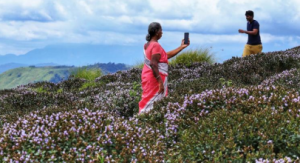
Explanation:
- The Ministry of Environment, Forest and Climate Change (MoEF) has listed Neelakurinji ( Strobilanthes kunthiana) under Schedule III of the Wildlife (Protection) Act, 1972, including it on the list of protected plants.
- In Neelakurinji, ‘Neela’ means blue, and ‘Kurinji’ refers to the flowers.
- The flowers give the ‘Nilgiri Mountain Range’ its name.
- All Neelakurinji species are endemic to the Shola Forest of Western Ghats.
- According to statistics, there are more than 40 different varieties of Neelakurinji in India.
- Flower Bloom takes place once in 12 years as the pollination of flowers needs a longer period.
2. Which one of the following protected areas is well known for the conservation of a subspecies of the Indian swamp deer (Barasingha) that thrives well on hard ground and is exclusively graminivorous?
A. Kanha National Park
B. Manas National Park
C. Mudumalai Wildlife Sanctuary
D. Tal Chhapar Wildlife Sanctuary
Answer: A
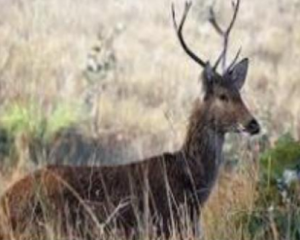
Explanation:
- Three subspecies are currently recognized:
- Western swamp deer – Indogangetic plains.
- Southern swamp deer – Kanha National Park
- Southern Swamp Deer – The State animal of Madhya Pradesh – Hard Ground Barasingha is found exclusively in Kanha Tiger Reserve.
- It is the first tiger reserve in India to officially introduce a mascot, “Bhoorsingh the Barasingha”.
- It was reintroduced into Satpura Tiger Reserve.
- Eastern swamp deer – Kaziranga and Dudhwa National Parks).
- It is the state animal of the Indian states of Madhya Pradesh and Uttar Pradesh.
- Vulnerable
- Schedule I of the Wild Life (Protection) Act, 1972.
- Appendix I of Convention on International Trade in Endangered Species of Wild Fauna and Flora (CITES)
3. Indian Star Tortoise is protected under
1. Schedule I of WPA 1972
2. Vulnerable under IUCN red list
3. Appendix I of CITES
Which of the above is/are correct?
A. 1 and 2 only
B. 2 and 3 only
C. 1 and 3 only
D. All of the above.
Answer: B
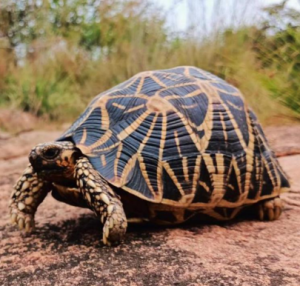
Explanation:
- Indian star tortoise is found across the Indian sub-continent, more specifically, in the Central and Southern parts of India, in West Pakistan and in Sri Lanka.
- A recent study on the Indian star tortoise (Geochelone elegans) distributed across South Asia has revealed that the genetic diversity of the species as well as habitat has suffered major losses because of rampant illegal trade.
- According to the Wildlife Crime Control Bureau, 90% of the trade of Star Tortoise occurs as part of the International pet market.
- Wildlife Protection Act 1972: Schedule IV
- Convention on International Trade in Species (CITES): Appendix I
- IUCN Status: Vulnerable
4. Consider the following statements regarding the impacts of Mulch:
1. It can suffocate plants by overheating the soil and starving them of light and water.
2. It can create a hiding place for harmful insects.
3. It increases the penetration of sunlight to kill weed seeds
Select the correct answer code:
A. 1 and 2 only
B. 2 only
C. 1 and 3 only
D. All of the above
Answer: A
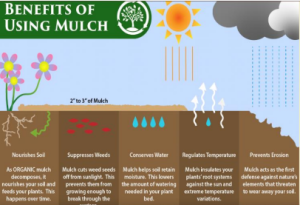
Explanation:
- Mulch is the common word in most of agriculture-related farming or cultivation.
- Mulch is basically a protective layer spread on top of the soil to control the effects of local climatic conditions.
- Mulching is referred to as a mixture of wet straw, leaves, and loose earth evenly spread on the ground to protect the newly planted trees, shrubs, and their roots.
- The main disadvantage of mulching is that it can create a hiding place for harmful insects, and when applied too thickly can suffocate your plants by overheating the soil and starving them of light and water.
5. Recently, researchers have found the White Tufted Royal Butterfly, a rare
butterfly species in Kannur, Kerala. It is protected under which schedule of WPA 1972?
A. Schedule I
B. Schedule II
C. Schedule III
D. Not yet protected
Answer: B
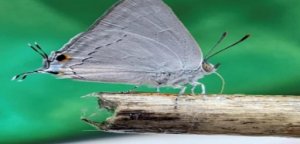
Explanation:
- A team of butterfly observers and researchers have found White Tufted Royal Butterfly, a rare butterfly species at Kalliyad in Kannur.
- According to researcher and butterfly observer V.C. Balakrishnan, the butterfly is protected under Schedule 2 of the Wildlife Protection Act.
- The species had been spotted in Agasthyakoodam in 2017 and the Shendurney Wildlife Sanctuary in 2018.
➡️UPSC 2023 General Studies Course: https://sleepyclasses.com/general-studies-for-upsc/
➡️Sociology Optional for UPSC : https://sleepyclasses.com/sociology-for-upsc/
➡️Political Science and IR for UPSC: https://sleepyclasses.com/psir-for-upsc/
➡️Signup here – https://sleepyclasses.com/
Have any query related to UPSC preparation: 📞Contact Us ► Toll-Free: 1800 890 3043 ► Mobile: 6280133177 ► Email: Sleepy.Classes@gmail.com ► WhatsApp: 6280133177



